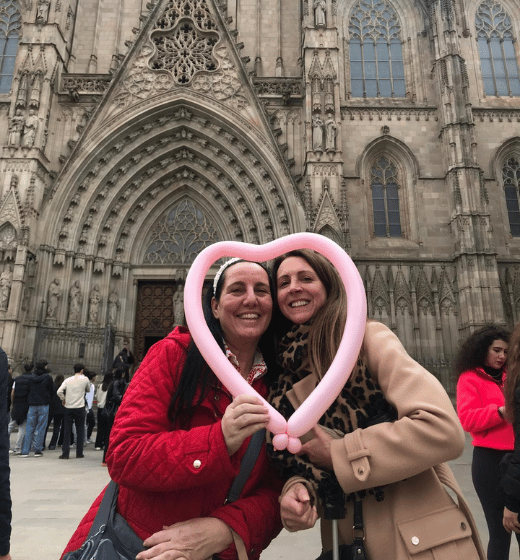

Laura, a 50-year-old professional from London, brought a bright spirit and unwavering dedication to her Spanish learning adventure.
Currently working toward her B1 level, she arrived in Catalonia with solid A2 skills, a love for languages, and a routine that included weekly lessons and daily practice using apps.
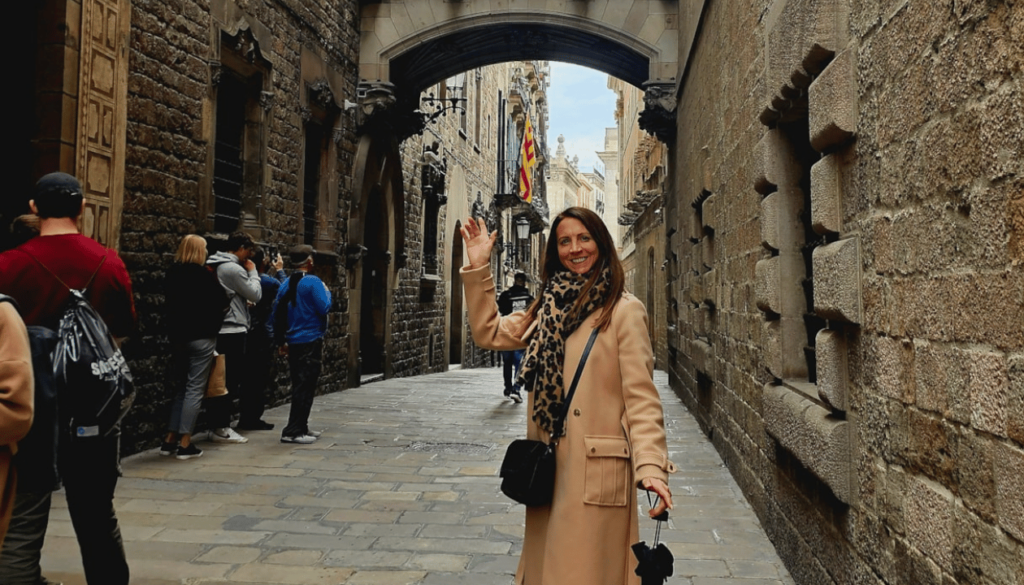
But what really stood out about Laura was her energy—she lives life to the fullest, staying active, eating well, and surrounding herself with good company. Her positive mindset and steady progress made her a true inspiration to our learning community.
Introduction to Barcelona

Barcelona, the capital of Catalonia, is a vibrant country with a rich cultural heritage, making it one of the most popular tourist destinations in Europe. Located in the northeastern part of Spain, Barcelona is known for its stunning architecture, beautiful beaches, and world-class art.
The city is a must-visit destination for any traveler, with its unique blend of traditional and modern elements.
From the famous Las Ramblas to the stunning beaches of Costa del Maresme, Barcelona province has something to offer for every kind of traveler. As one of the many Spanish provinces, Barcelona is a great representation of the country’s warm and welcoming culture.

Planning the Trip
Planning a trip to Spain, particularly to cities like Barcelona, requires some research and preparation. Travelers should be aware of the entry requirements, including the need for a valid passport and, in some cases, a visa.
It’s also essential to consult the Spanish authorities’ website for the latest information on travel regulations and requirements. Additionally, travelers should consider purchasing travel insurance to cover unexpected medical treatment or other emergencies.
When planning long distance trips, it’s crucial to understand the rules governing public transportation and to have a valid international driving permit prior to renting a car. Spain is part of the Schengen area, making it easy for travelers from European countries to enter the country.
Living the Language: Personalised Lessons with Purpose
Every day, Laura engaged in one-on-one lessons designed around her goals and interests. With the support of myself and my wonderful assistants, Lydia and Laura, we built sessions that focused on real-life communication.
Our lessons took many forms—sometimes we sat down at the table for more traditional grammar work, but just as often, we practised Spanish while strolling through town, during outings, or over shared meals. From reviewing verbs during a forest walk to discussing vocabulary in a café, each moment was an opportunity to connect language with life.
Laura embraced this dynamic approach with joy, and by midweek, her confidence in using Spanish in natural, everyday situations had grown beautifully.
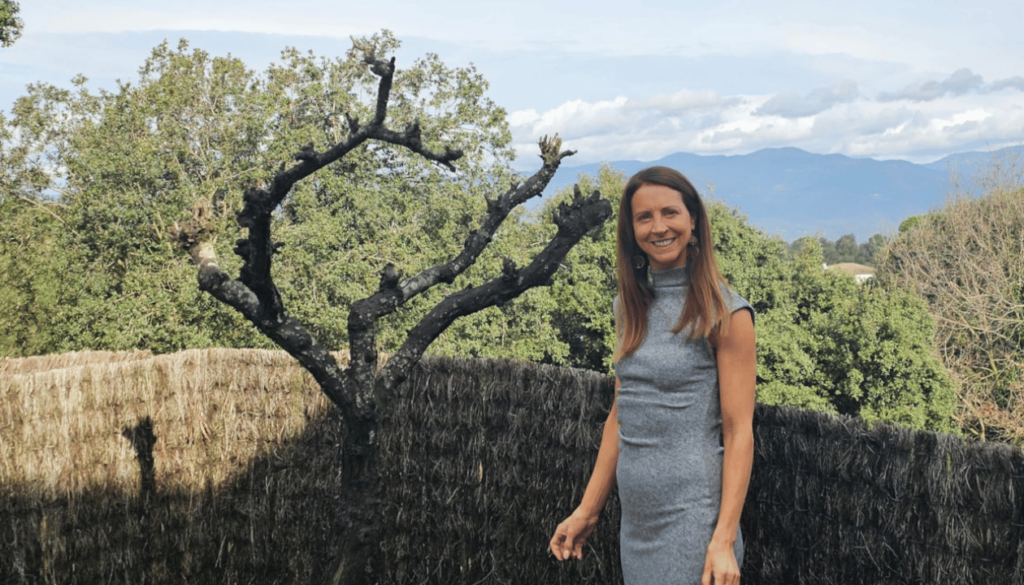
Beyond Barcelona: A Taste of Catalonia’s Hidden Gems
While Barcelona was the anchor of Laura’s trip, her experience extended into the surrounding province. She explored the peaceful towns of Dosrius, Argentona, and Mataró—each offering a fresh setting to practise Spanish and connect with Catalan life.
From the countryside’s quiet beauty to the lively streets of local festivals, these excursions brought variety and richness to her immersion. Every stop added cultural depth and new vocabulary, giving Laura a broader view of Spain beyond the tourist trails. Laura’s exploration of Catalonia gave her a taste of the diverse experiences available in southern Spain, including its vibrant lifestyle and cultural offerings.
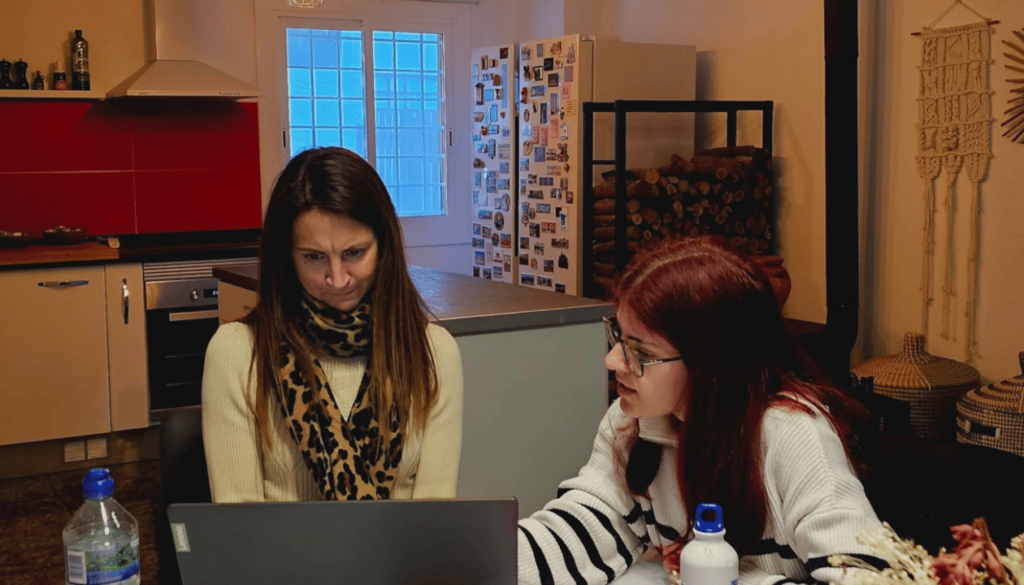
Modernist Marvels: Exploring Casa Coll i Regàs in Mataró
One sunny afternoon, Laura, my mum, and I explored Casa Coll i Regàs, a stunning modernist home designed by Puig i Cadafalch. Wandering through stained glass windows and decorative tiles, we discussed everything from design details to daily life in the early 1900s—all in Spanish.
It was one of those magical learning moments where language and culture come together seamlessly. Laura asked questions, shared reflections, and picked up expressions she’d remember long after the tour ended.
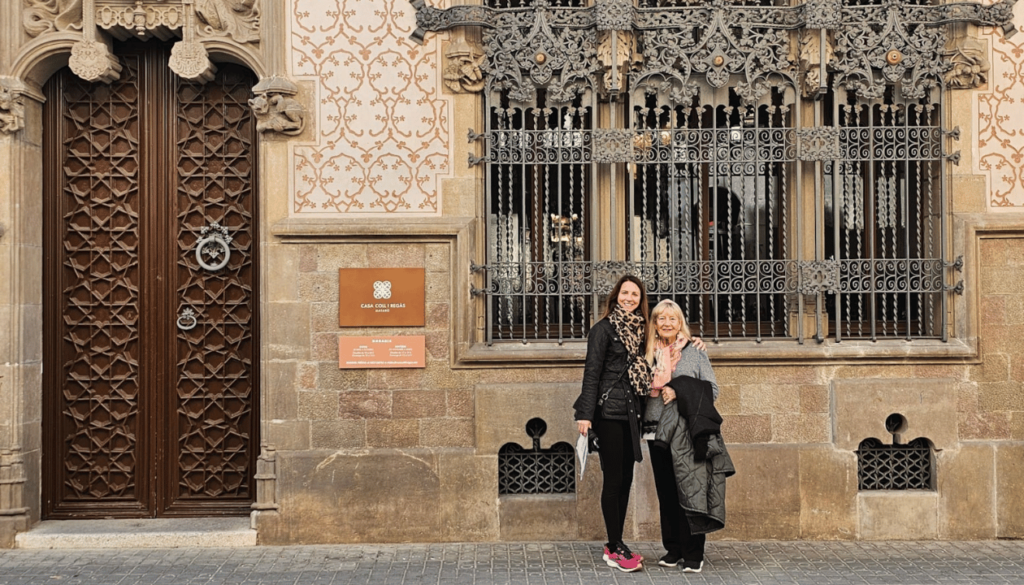
Local Treasures at La Confianza in Mataró
After a morning of exploring, we made a stop at La Confianza, a charming artisan shop tucked away in the old town of Mataró. Specialising in handmade goods and locally crafted items, the shop is a beautiful showcase of Catalan creativity and tradition.
Elaine browsed the unique ceramics, soaps, textiles, and home décor pieces, taking her time to read labels, ask questions, and chat with the friendly shop owner—all in Spanish. She was especially drawn to the local products made with natural ingredients and traditional techniques.
The warm, welcoming atmosphere made it the perfect place to practise real-world Spanish in a relaxed and authentic setting. Elaine even chose a few souvenirs to take home—each one carrying a story, and each purchase made with growing confidence in her Spanish.
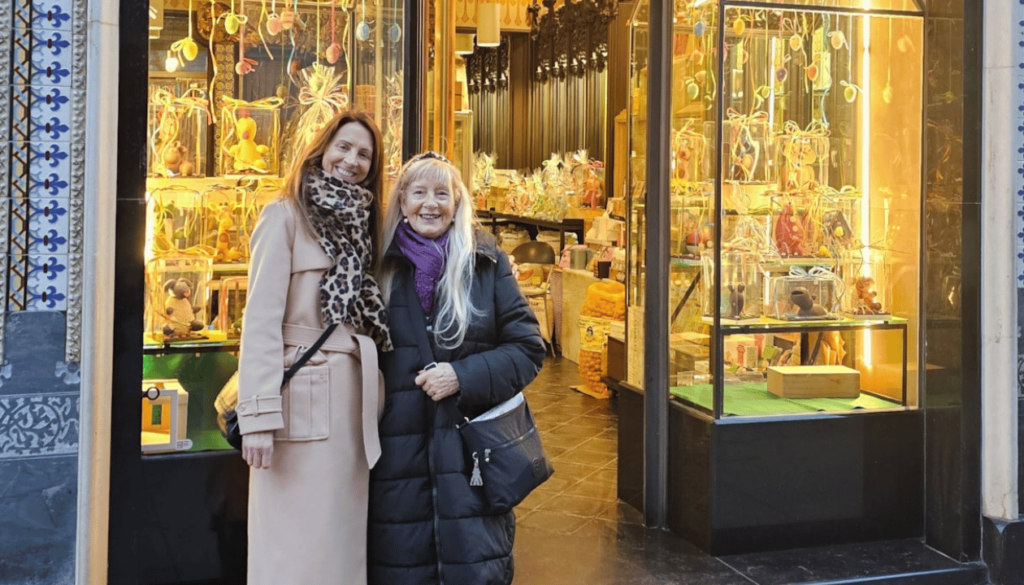
Art, History, and Language at the Jug Museum in Argentona
One of the most enriching moments of the week was our visit to the Museu del Càntir in Argentona, a town known for its deep-rooted ceramic traditions. The museum, dedicated to the history and craftsmanship of water jugs, offered the perfect blend of culture and language learning.
Laura explored the exhibits with curiosity, moving through centuries of pottery, from simple clay vessels to intricately painted masterpieces. We discussed the uses of jugs in daily Spanish life, their evolution over time, and the significance of water in Catalan heritage—all in Spanish.
She practised vocabulary related to materials, colours, shapes, and historical periods, and engaged in conversation about sustainability, tradition, and the beauty of handmade work. The museum’s peaceful setting gave her space to think, absorb, and apply new language structures in a meaningful way.
By the end of the visit, Laura wasn’t just describing objects—she was connecting with stories, culture, and deeper expressions of Spanish life.
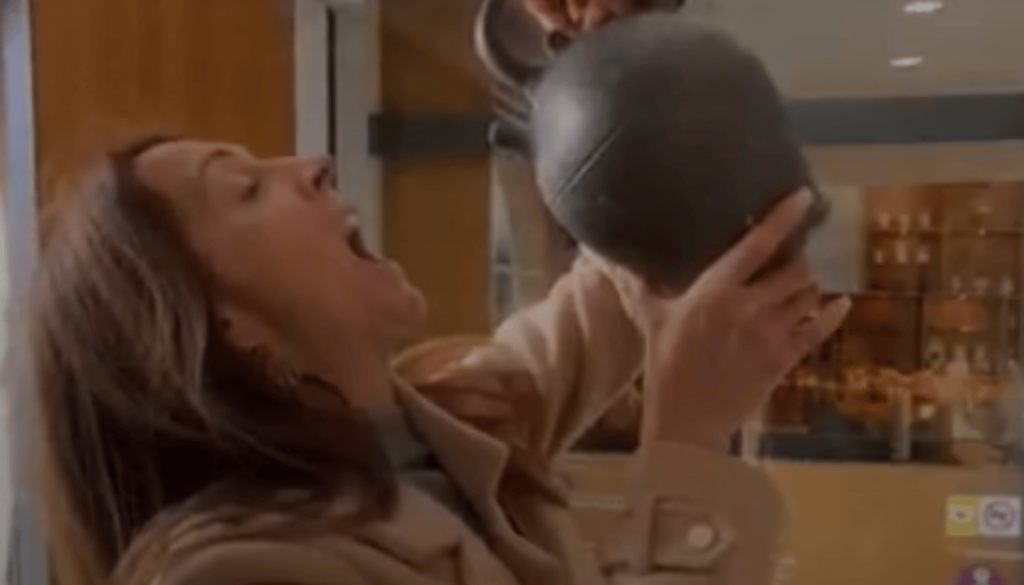
Dosrius: Where Nature Meets Language
Guided by Lydia, one of my teacher assistants, Laura took her Spanish outdoors in Dosrius, where lessons turned into storytelling. Surrounded by nature, she practised verb tenses, described what she saw, and engaged in conversations about nature and art.
This peaceful setting helped Laura process grammar and vocabulary in a relaxed, enjoyable way—proof that language learning isn’t limited to a classroom.
Heart of the City: Speaking Spanish in Central Barcelona
Back in the city, Laura embraced the buzz of Barcelona’s city centre. From chic Passeig de Gràcia to the hidden gems of the Gothic Quarter and Las Ramblas, she navigated shops, asked for directions, and interacted with locals in Spanish. Laura skillfully navigated through the crowds in Barcelona’s city center, making the most of her interactions with locals.
Barcelona’s public transport made exploring a breeze, and Laura took every opportunity to practise—from cafés to boutiques, she became a confident city explorer.
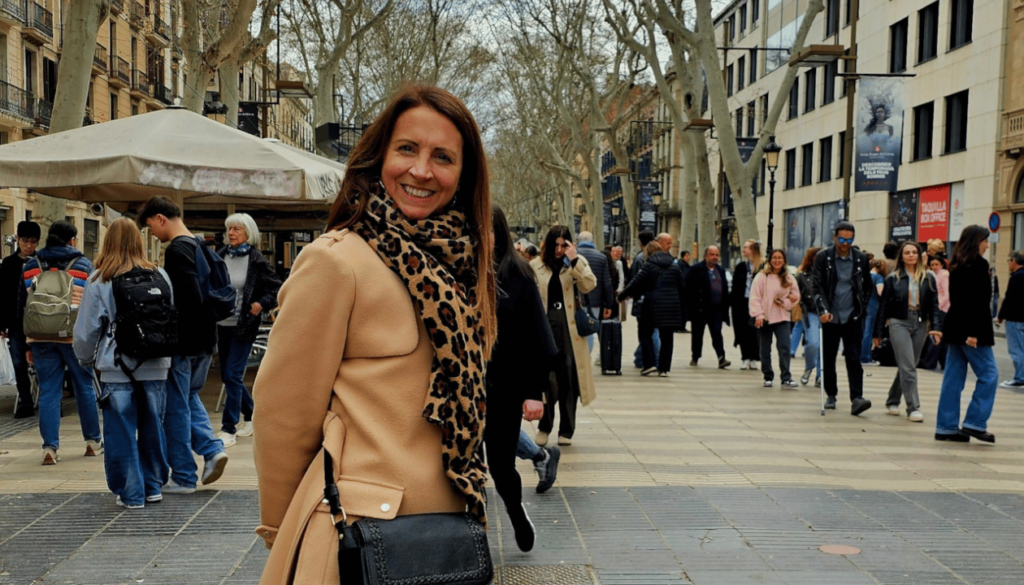
Catalan Architecture: A Modernist Delight
We visited Casa Amatller, located right beside Casa Batlló. Both modernist masterpieces told stories of innovation and elegance. Laura learned about the Amatller family’s chocolate empire and picked up new vocabulary around design and business.
It was a visual feast and a linguistic challenge—and Laura embraced both with curiosity and ease.
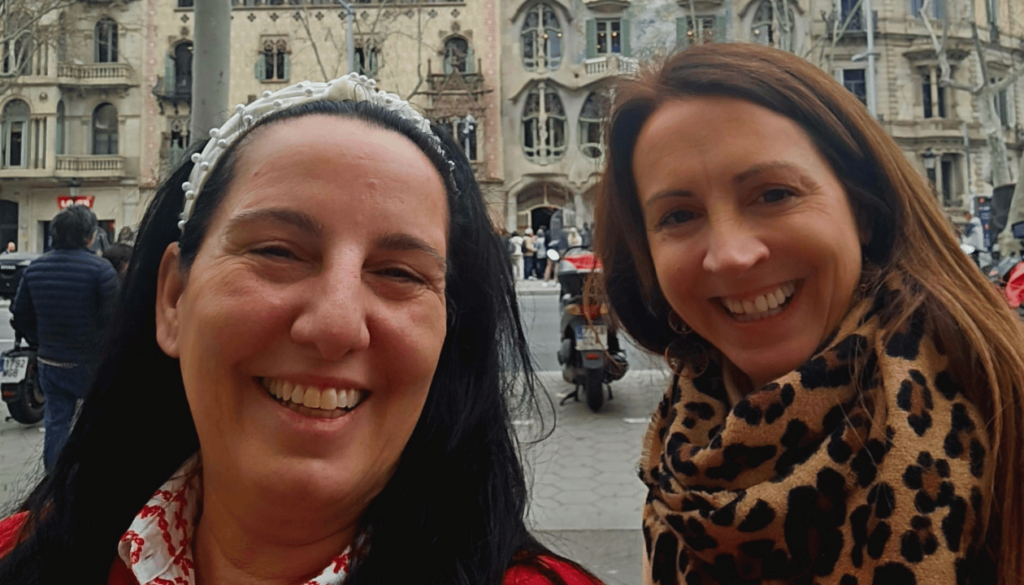
Sunshine and Spanish in Plaça Reial
Later that afternoon, we found ourselves in the elegant Plaça Reial, one of Barcelona’s most picturesque squares. Surrounded by palm trees, arcaded buildings, and the gentle hum of street musicians, it was the perfect place to rest, recharge, and keep the Spanish flowing.
We took a seat at a sunny terrace café, where Laura ordered her drink confidently in Spanish and struck up a friendly conversation with the waiter. As we people-watched and chatted about Gaudí-designed lampposts and the square’s history, Laura practised describing scenes, expressing opinions, and asking questions—all in the target language.
The relaxed atmosphere and real-life interactions made it an ideal moment for Laura to consolidate what she’d learned earlier in the day. In Plaça Reial, language learning felt as natural as the sunshine on our faces.
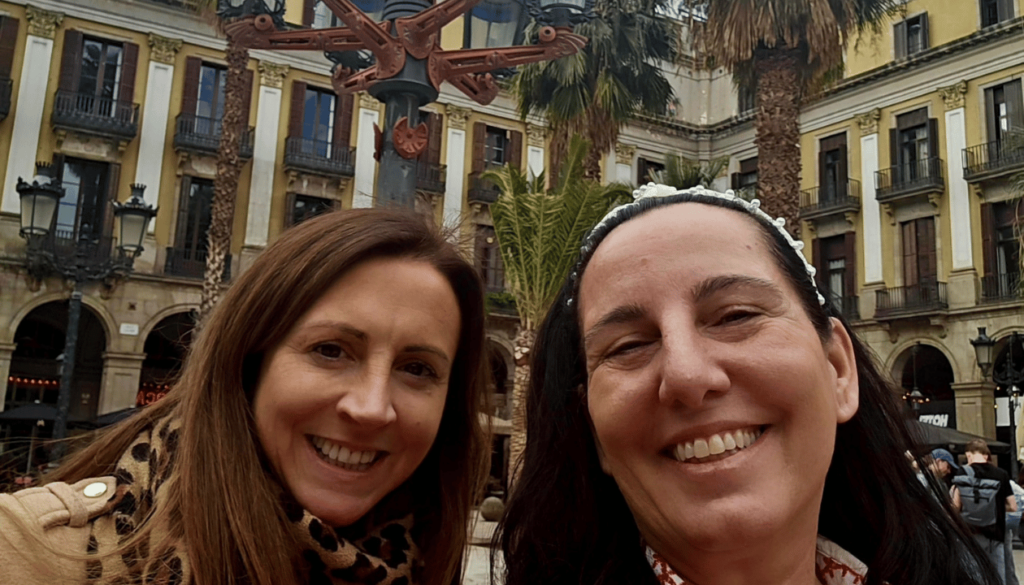
Quiet Reflections at the Barcelona Cathedral
Just a short stroll from Plaça Reial, we arrived at the awe-inspiring Barcelona Cathedral, nestled in the heart of the Gothic Quarter. As we stepped into the peaceful cloisters and marbled halls, Laura took in the soaring ceilings, stained glass, and serene courtyards—all while practising vocabulary around history, architecture, and religion.
We read plaques, discussed the building’s Gothic design, and admired the 13 resident geese in the cloister garden—each representing a year of Saint Eulalia’s life. The tranquil setting inspired deeper conversation, and Laura used this quiet moment to reflect, ask thoughtful questions, and stretch her Spanish in a more contemplative context.
It was a meaningful pause in a busy day—one that connected language with emotion, culture, and spiritual heritage.
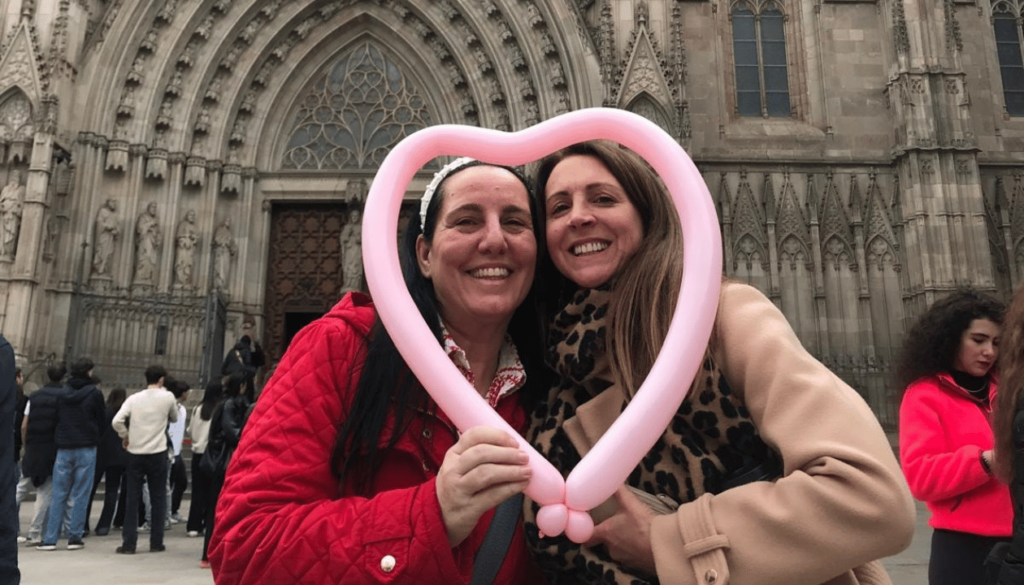
Flavours of Catalonia: Meals That Speak Volumes
One of the most memorable parts of Laura’s stay was the food, especially the warmth of shared meals. At home, she dined with my family, where my dad (our talented chef!) prepared traditional Catalan dishes with love. Laura had the opportunity to taste some of the best food in Catalonia, making her culinary experiences truly memorable.
Laura didn’t just eat—she listened, asked questions, joined the conversation, and practised Spanish in the most genuine way possible: over good food with good company.
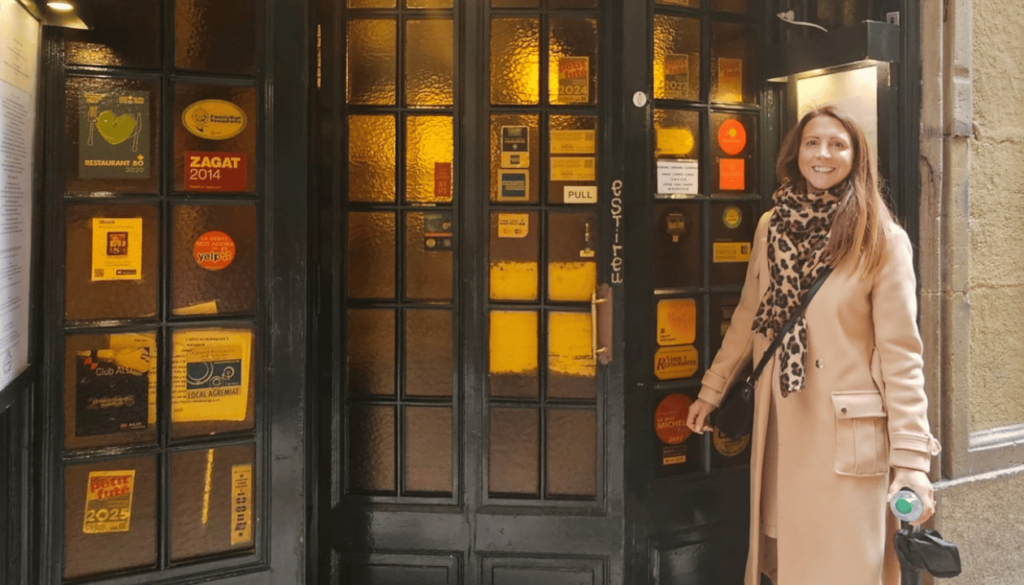
A Meal to Remember: Dining at Can Culleretes
During one of our afternoons in Barcelona, we treated ourselves to lunch at Can Culleretes, the oldest restaurant in the city. Tucked away in the Gothic Quarter, this historic gem offered the perfect setting for Laura to experience the flavours and traditions of Catalan cuisine.
From reading the menu to chatting with the friendly staff, Laura embraced the chance to practise her Spanish in a new and exciting context. We ordered dishes like escudella i carn d’olla and bacallà a la llauna, and of course, finished with a classic crema catalana.
The atmosphere, rich with history and charm, sparked lively conversation about food culture, family recipes, and local expressions. It was more than just a delicious meal—it was another immersive moment that brought language, culture, and connection to the table.
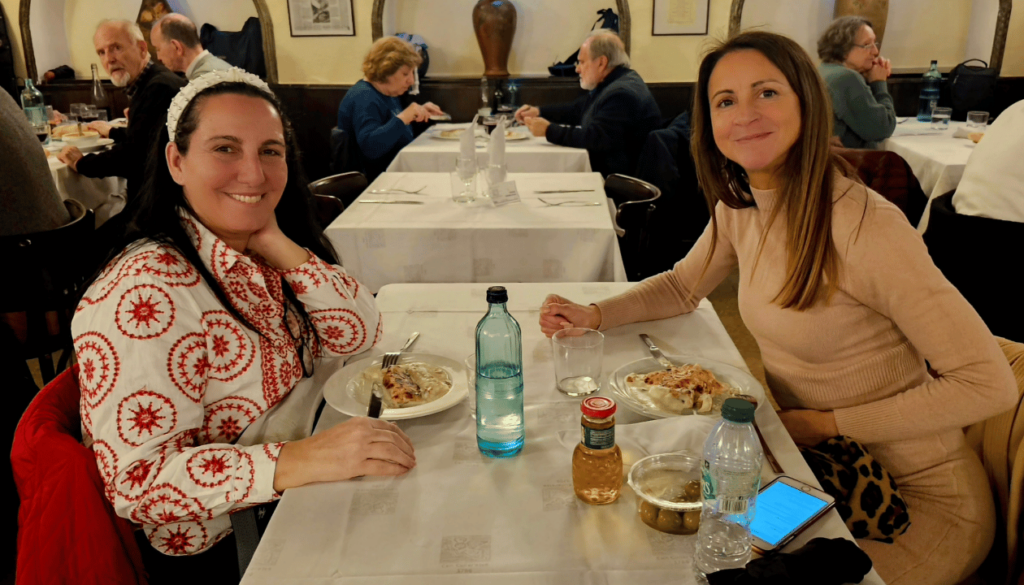
Churros, Chatting, and Sweet Moments
No immersion would be complete without chocolate con churros! We stopped by a local churrería in Mataró for this classic treat. As we shared stories and snacks, Laura practised ordering and casual conversation—all in Spanish, of course.
It was a small moment, but one that left a big impression (and a full heart).
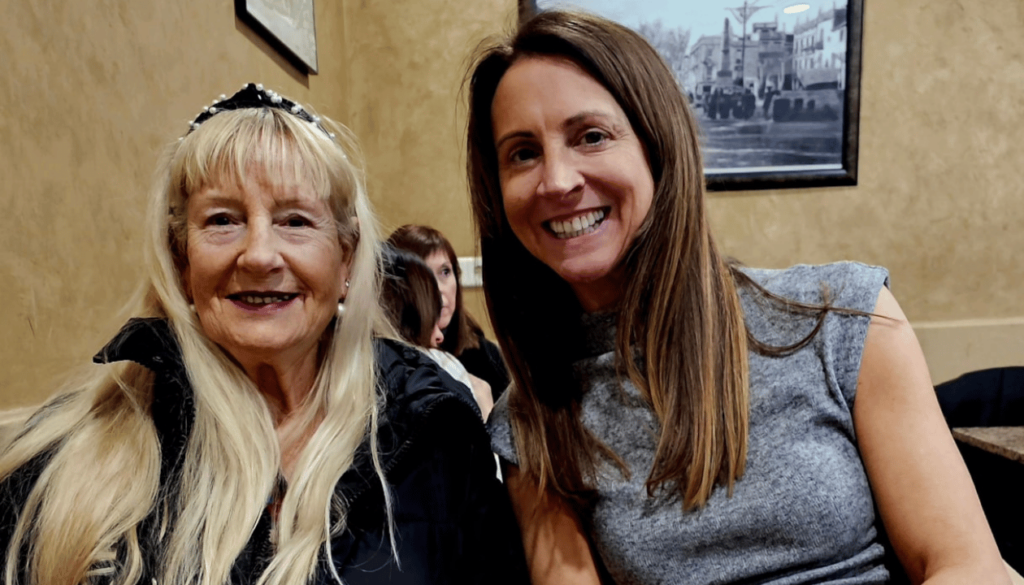
Birds of a feather flock together
It couldn’t be more true with my mum and Laura. Both absolute shopaholics with a special love for clothes and jewellery, they bonded instantly. I just followed them around like their personal paparazzi, snapping photos while they admired every dress, scarf, and sparkly earring in sight!
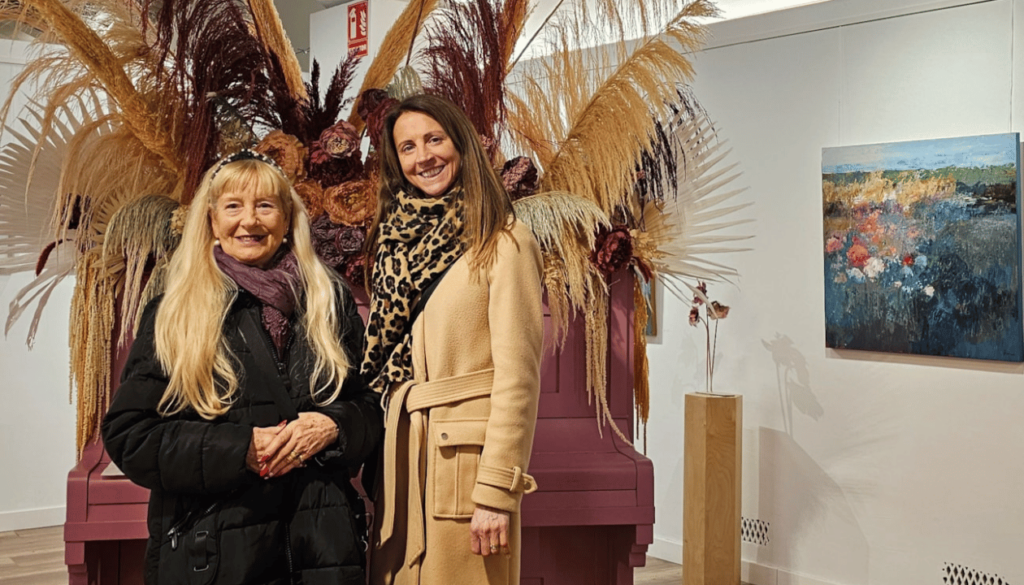
A Week of Language, Laughter, and Connection
What made this SHIP experience so special wasn’t just the progress Laura made—it was the genuine connection we shared throughout the week.

She joined us for meals, walks, games, and meaningful conversations, embracing every opportunity to use her Spanish in real life.
With our dogs, Rumba and Samba, by her side, and Spanish echoing through every corner of the house, Laura didn’t just study the language—she lived it. And watching her confidence and joy blossom over the course of the week was truly unforgettable.
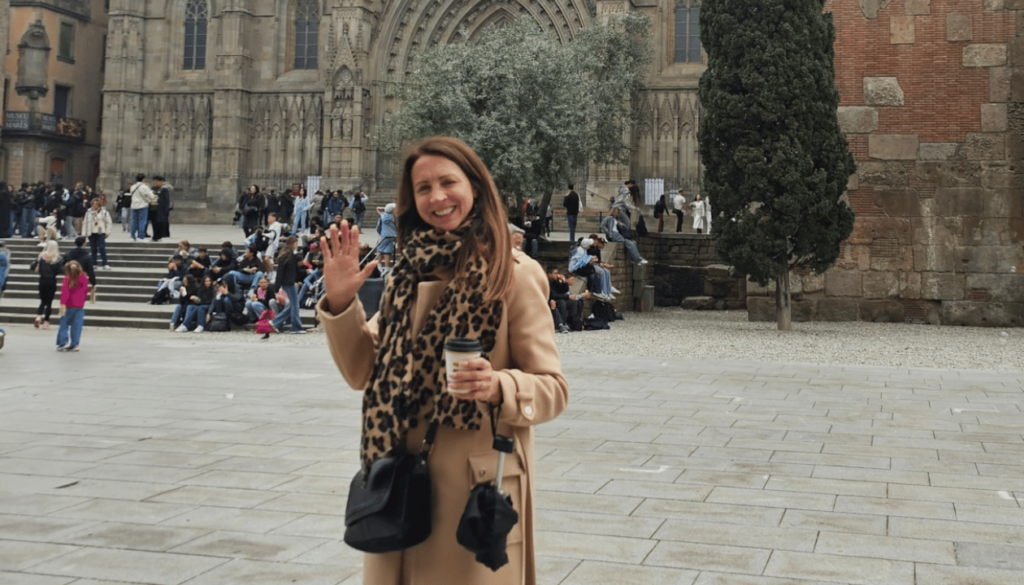
What do I need to enter Spain from the UK?
If you’re travelling to Spain from the UK, you’ll need a valid passport that’s less than 10 years old and valid for at least three months beyond your departure date from the Schengen area. UK citizens can visit Spain visa-free for up to 90 days within any 180-day period. At the border, you may be asked to show proof of return travel, accommodation, and sufficient funds for your stay. While travel insurance isn’t mandatory, it’s highly recommended to cover health care, trip cancellations, and other emergencies—especially if you’re taking part in an immersion programme like SHIP.
Do and don’ts in Spain?
When visiting Spain, it’s important to embrace the local customs with respect and curiosity. Do greet people with a friendly “¡Hola!” and use “por favor” and “gracias” generously—Spaniards appreciate good manners. Be punctual for formal appointments, but understand that social gatherings often run on a more relaxed schedule. Dress modestly when visiting churches or religious sites, and always respect quiet hours during siesta time in smaller towns. On the other hand, don’t assume everyone speaks English—making an effort to speak Spanish goes a long way. Avoid discussing sensitive topics like politics or regional independence unless you’re invited to. And remember, tipping is appreciated but not expected—5 to 10% is more than enough in restaurants.
Staying Safe in Barcelona
Staying safe in Barcelona requires some common sense and awareness of the local environment. Travelers should be cautious of pickpocketing in crowded areas, especially in tourist sites like La Rambla. It’s also essential to keep valuables secure and to be mindful of scams and distractions. The local police are always available to assist travelers, and many officers speak English.
When using public transportation, travelers should be aware of their surroundings and keep their belongings close. Additionally, it’s a good idea to have a mobile phone with a valid SIM card and to know the emergency numbers, including the Spanish National Police. By following these travel tips, travelers can have a safe and enjoyable trip to Barcelona and the rest of Spain.
Tap water is safe to drink in most parts of the country, and many restaurants offer a wide range of delicious food, including the best seafood in Europe. With its warm climate, beautiful beaches, and vibrant culture, Spain is a great destination for travelers from around the world.

